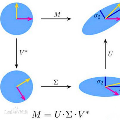The synergy of metasurface-based holographic surfaces (HoloS) and reconfigurable intelligent surfaces (RIS) is considered a key aspect for future communication networks. However, the optimization of dynamic metasurfaces requires the use of numerical algorithms, for example, based on the singular value decomposition (SVD) and gradient descent methods, which are usually computationally intensive, especially when the number of elements is large. In this paper, we analyze low complexity designs for RIS-aided HoloS communication systems, in which the configurations of the HoloS transmitter and the RIS are given in a closed-form expression. We consider implementations based on diagonal and non-diagonal RISs. Over line-of-sight channels, we show that the proposed schemes provide performance that is close to that offered by complex numerical methods.
翻译:随着智能表面(RIS)的代表性技术之一——全息表面(HoloS)技术的应用日益广泛,研究人员之间开始考虑如何更好地协同作战。然而,动态全息面的优化需要使用数值算法,例如基于奇异值分解(SVD)和梯度下降法的算法,这些算法通常在元件数量较大时计算量较大。因此,我们分析了在闭合形式表达式中给出HoloS发射器和RIS的低复杂度设计,通过对对角线和非对角线RIS的实现进行考量,展示了在视距通道下所提到的全息辅助RIS通信系统方案提供了接近于复杂数值方法所提供的性能。











